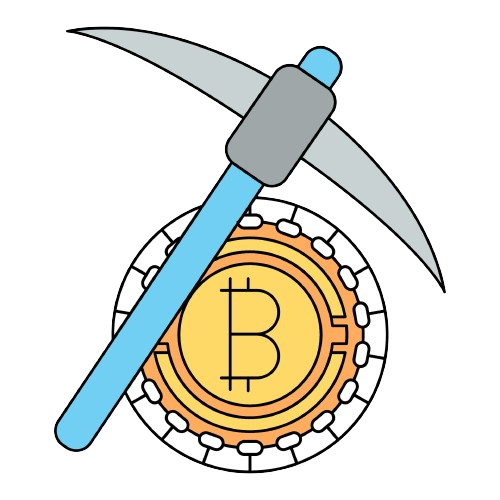
With the rising popularity of cryptocurrencies like Bitcoin, more people are looking to acquire these digital assets and add them to their investment portfolios. One way to obtain Bitcoins is through Bitcoin mining, which involves using specialized computer hardware and software to solve complex mathematical problems and verify Bitcoin transactions on the blockchain. Successfully mining one block of transactions results in a reward of a fixed number of Bitcoins, currently set at 6.25 BTC per block.
The time it takes for an individual to generate one Bitcoin through mining depends on several factors related to the mining hardware, software, and overall network difficulty. As Bitcoin mining has evolved, it has become increasingly difficult for solo miners using consumer-grade hardware to mine Bitcoins in any reasonable timeframe. However, by joining a mining pool and contributing hashrate, individual miners can still earn fractional Bitcoin rewards consistently.
This article will explore the key factors that affect the time required to mine one full Bitcoin for the individual miner. While successfully mining even a portion of one Bitcoin can be a difficult undertaking, understanding these variables can help manage expectations around the mining process.
Bitcoin Mining Difficulty
The single most important factor determining Bitcoin mining times is the network mining difficulty. In the Bitcoin network, difficulty adjusts every 2016 block, or approximately every two weeks, based on the amount of computational power deployed to mine across the network.
As more miners join the network and specialized ASIC mining hardware continues to improve, the hashrate dedicated to mining Bitcoin goes up. This increased competition means the difficulty goes up as well, requiring more computations to solve each block. When Bitcoin first launched, the difficulty was low enough that even basic CPU mining could discover multiple blocks per day. Now the difficulty is billions of times more difficult, requiring expensive, high-powered miners just to have a chance at earning a fraction of one Bitcoin.
With all else being equal, higher mining difficulty translates directly to longer times to generate one Bitcoin. Unless a miner has access to extremely cheap electricity, the latest mining hardware, and low operating temperatures, mining solo with consumer-grade hardware is simply not profitable given the current high difficulty. While difficulty retargets every two weeks, it generally trends upwards over time as more miners compete for limited block rewards.
Mining Hardware Hashrate

The speed at which mining hardware can perform cryptographic hash functions, measured in hashes per second or hashrate, also has a large influence on Bitcoin mining times. The faster a miner’s ASIC hardware can guess at outputting a valid hash for the next block, the greater chance they have of solving a block first and earning the reward.
Standard consumer PCs generally have very low hashrate capabilities compared to hardware explicitly designed for Bitcoin mining. Specialized mining chips like those from Bitmain, Bitfury, and Canaan Creative can achieve tera hashes per second (trillions of hashes per second). This dwarfs a CPU’s ability, which may max out in the mega hashes per second (millions of hashes per second).
With Bitcoin’s difficulty so high currently, only miners using the latest generations of high-powered ASIC miners have any realistic chance of generating one Bitcoin in a reasonable timeframe, either solo mining or in a pool. Even profitable miners using older hardware could take months or years before earning one whole Bitcoin. The fact is, the faster the hardware’s hashrate, the higher the chances each hash will result in solving a block. A higher hashrate equals a faster generation of one Bitcoin.
Mining Pool Hashrate
For most individual miners, joining a mining pool is the only realistic way to earn any Bitcoin from mining efforts. By combining computational resources across many miners, pools reach hashrate levels required to consistently solve blocks and distribute fractional Bitcoin rewards to participants. The more total hashrate a pool has, the better the miners’ collective chances are of validating the next block and splitting the 6.25 BTC reward among themselves.
Larger established mining pools generally have a higher proportion of the overall Bitcoin network hashrate. With more hashrate to leverage, large pools find blocks more frequently. This results in faster accumulation of Bitcoin for individual miners, compared to solo mining or very small pools with inconsistent block discovery.
When evaluating mining pools to join, the total pool hashrate is important for miners looking to earn Bitcoin consistently over time. Though fees charged per block rewards vary across different pools, being part of a large pool is the best way for an individual miner to see regular returns in Bitcoin rather than infrequent solo block discoveries.
Cost of Electricity for Mining

The cost efficiency of mining hardware is also a major determining factor when estimating Bitcoin generation times. Mining rigs consume immense amounts of electricity around the clock. Profitable mining requires keeping electricity costs lower than the value of the block rewards earned by mining hardware. As such, cheaper power equals greater Bitcoin mining profitability.
Regions with inexpensive electricity tend to attract more mining operations. China had previously dominated Bitcoin mining due to low energy costs. However, a Chinese mining crackdown has since pushed many miners to relocate to Nordic countries with similarly cold climates and cheap renewable energy sources like hydropower. Miners in locations with average or high energy costs find it very difficult to maintain positive cash flow as network difficulty rises.
Since mining rigs running 24/7 represent a constant power drain, savvy miners seek out the cheapest electric rates possible. Local energy subsidies, excess renewable capacity, and off-peak rates can significantly lower costs. Miners with access to renewable energy for as little as 1 or 2 cents per kWh have much more room for profitability than those paying 10 cents or more. The ability to acquire Bitcoin faster is highly dependent on keeping electricity costs in check.
Conclusion
Generating even one Bitcoin through mining requires tremendous amounts of computing resources and energy. While mining was once possible for the average person using a home PC, changing economics and technology have put it out of reach for all but the most dedicated individual miners. Joining a reputable mining pool helps improve the odds and frequency of Bitcoin earnings through shared processing power. However, mining remains a challenging and somewhat unpredictable way to obtain Bitcoin compared to simply purchasing it outright through an exchange.
The chances of successfully mining one Bitcoin ultimately depend on several key factors like mining difficulty, hardware hashrate, pool size, and electricity costs. Mining is simply a numbers game, where higher investment generally increases the odds and speeds up Bitcoin generation. With difficulty projected to keep rising over time, being an efficient miner is critical for profitability and mining competitiveness. Knowing the variables and their impact helps manage expectations when entering the mining arena. While it may take months or years before earning a full Bitcoin reward, joining a legitimate mining operation can still provide individual miners an avenue to participate in validating and securing the Bitcoin network while stacking sats over time.